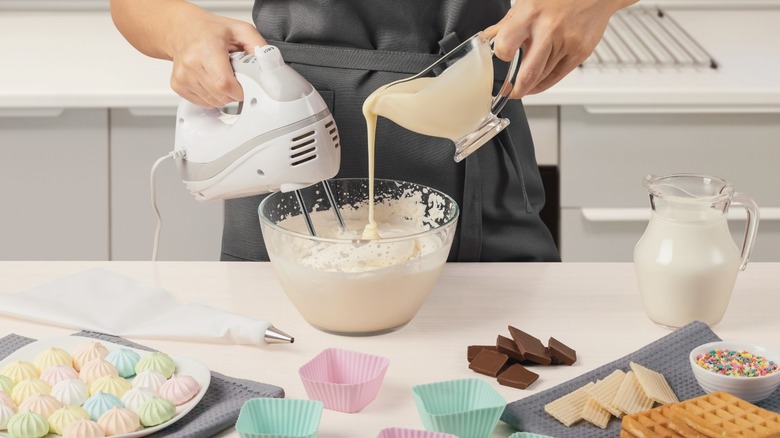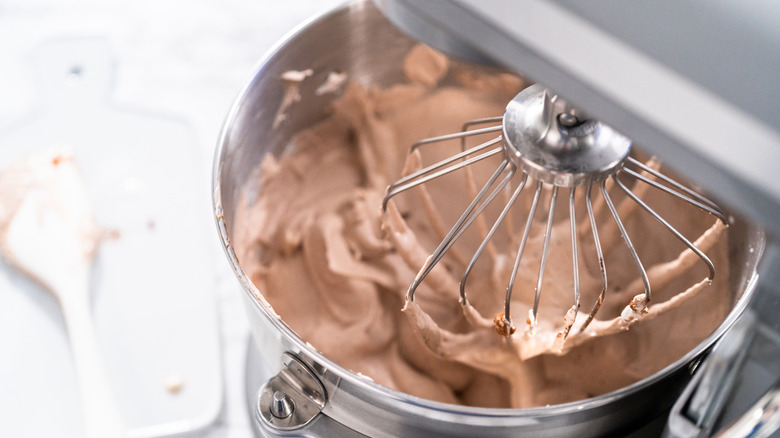The Reason You Should Start Mixers At A Low Speed
When it comes to baking at home, a stand mixer can be a wildly helpful tool. At the same time, it can be expensive, slightly cumbersome, and challenging to use. There are a few tricks that come in handy when working with these machines, and one is particularly important if you want a well-blended and mixed batter or dough, and a kitchen that isn't strewn with the detritus of baking experiment gone awry. Conveniently, this tip also helps extend the life of your mixer.
All stand mixers come equipped with a flat beater, a wire whip, and a dough hook, as noted by KitchenAid. Whether making pizza dough, chocolate chip cookies, or whipped cream, these are versatile, durable machines that can save ample amounts of time and energy by giving you the flexibility and convenience to walk away as they whip, knead, fold, blend, and mix (no more sore arms from whipping cream by hand).
Southern Living applauds the mechanics and ease of the stand mixer, noting that one of the most important things to keep in mind when operating one is starting at a low speed and increasing from there. To many, that might be common sense, but for longer, more intensive jobs, some bakers might think to automatically turn up the dial instead of gradually increasing it as need be.
Starting at a low speed avoids mess and engine strain
Southern Living states that starting off at a low speed is better for your machine itself, making it so that the engine doesn't burn out from a "0 to 100" acceleration. Furthermore, the food itself also benefits, as "whipping too much air into your egg whites right out of the gate will result in a foamier, thinner meringue." The more gradual approach ensures machine safety and longevity and produces higher-quality end results.
Thankfully, some safeguards have been put in place to prevent bakers from immediately jumping to the highest speed. To avoid potential messes, the KitchenAid Use & Care Guide is quick to note that "all speeds have the soft start feature that automatically starts the stand mixer at a lower speed to help avoid ingredient splash-out and "flour puff" at start up, then quickly increases to the selected speed for optimal performance."
Other mixing tips from the KitchenAid guide involve adding ingredients close to the side of the bowl, adding solid ingredients toward the end of the mixing process at a low speed, and adding liquid ingredients at lower speeds "to avoid splashing." No matter what you're planning on making with your stand mixer, follow these simple steps and you're sure to wind up with a pleasurable experience and a delicious end product — not to mention a clean countertop.

